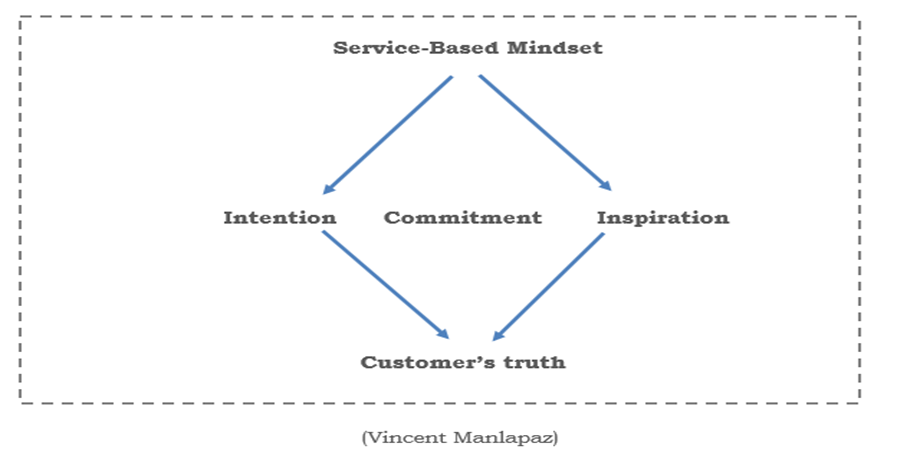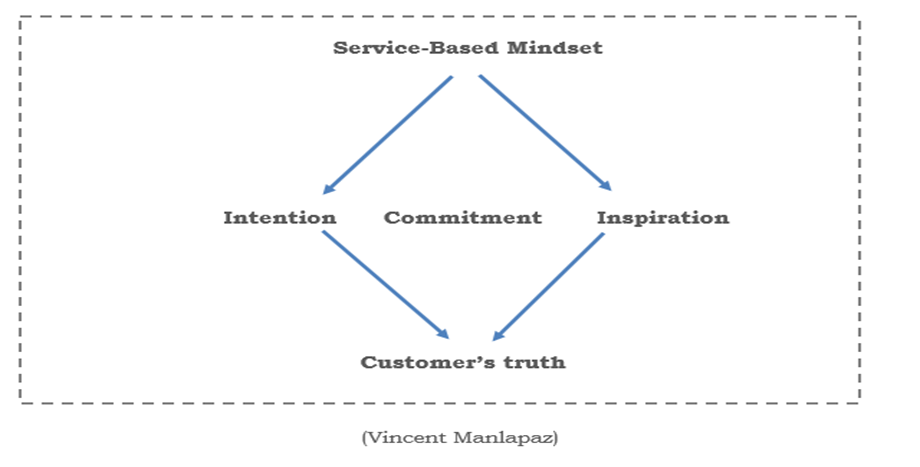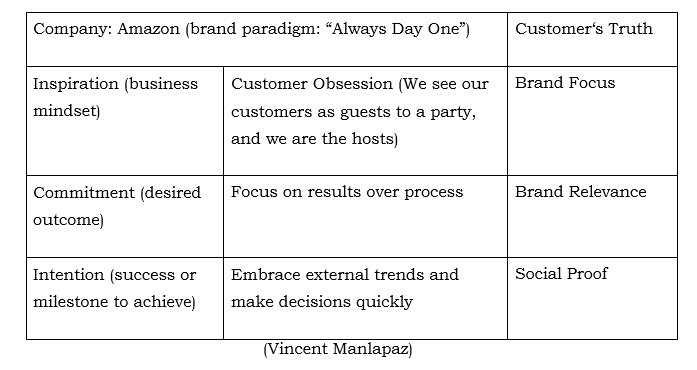What is a service-based paradigm mindset (excerpt from my book, "The Service-Based Paradigm Mindset."

In this era where customers compete against their own limited time and coveted success, a customer-first mindset must be shared with every person in your organization, regardless of department or role.
According to Gemma Espineira, VP Global Customer Success at Decibel, “When the value of your service is clearly understood, you will be able to sell more and implement CS programs that drive long term (and successful) partnerships.”
As the CS function has expanded and matured, business executives and leaders have recognized the need for other company changes to be more efficient and effective. They realize that achieving success is about collaboration (exchange of ideas), continuous improvement, and meaningful customer engagement.
It is vital to understand [1] The role customers should play in achieving their desired outcomes [2] The value the software/product provides to avoid low customer adoption [3] How to deliver and measure both customer success and your success.
In so doing, businesses can de-risk the customer’s decision during that initial purchase and provide a success plan that acts as the basis for CSMs to deliver, innovate, and prove value proactively.
To survive and thrive in dynamic environments, a successful business partnership requires a fundamental change in customer behavior and business mindset. In other words, organizational DNA [service-based mindset] should reflect customer sentiment, opinions, goals, personal motivation, desired success, and how organizations deal with each challenge.
Significance of service-based mindset
Every successful business has a mantra (a service-based mindset or statement that integrates with them based on their goals and success philosophy). For example, Apple's mantra, Think Different, perfectly encompasses the value the company puts on creativity.
This thinking or service-based mindset demonstrates the need for a culture of accountability and an unwavering commitment to brand excellence.
What is a service-based mindset? It encapsulates or fully describes the company's mission statement succinctly and memorably. It helps organizations decide, communicate, and align everyone around WHO they want to be, instead of WHAT they want to do.
Remember, brand experience is a result of positively reinforcing this service mindset and brand commitment. To illustrate and demonstrate how a service-based mindset works, below is a brand paradigm with associated attributes. I call this a Service-Based Paradigm Mindset.
Here is the breakdown of this process.

A service-based paradigm mindset focuses on creating customer value, loyalty, trust, and delivering success. For companies to provide the success that customers want, they must be responsive to their needs and challenges and manage their perception.
Failure to meet customer expectations not only affects the relationship but encourages dissatisfaction and distrust of business intent. The purpose of the service-based paradigm mindset is to align customer perceptions of the commitments made to them with actual service and delivered outcomes.
Here are the definitions of each attribute of this framework.
- Customer truth: What customers think and expect at the time service is delivered or rendered. It includes changes in customer behavior, emotional perception, value, and its influence on relationships.
- Inspiration: The process of being mentally stimulated to do or feel something, especially to do something creative (signified as a business mindset or philosophy). Hewlett Packard has an interesting business philosophy. Their brand paradigm is based on changing how we think in order to change how they do business. The big idea driving this [service] change is what they call the growth mindset.
- Commitment: The state or quality of being dedicated to a cause or activity. I find LinkedIn’s commitment as a stellar example. Employing and utilizing a business process and methodology for delivering a unique experience and business result. LinkedIn continues to set itself apart in the content marketing world by being equal parts of professional social media networks and thought leadership platforms.
- Intention: The impact of the brand efforts and how customers relate their feelings and thoughts towards this effort. Consider the contrasting intention of Yahoo and Google. Yahoo began as a broad-based internet portal supported by proprietary editorial content. It hired journalists to write entertainment stories and created utilities such as Yahoo Finance, Yahoo Movies, and Yahoo Sports to attract users. Over time, Yahoo executives began to spread resources among many additional initiatives, including social networks, products, media, and advertising. As a result, they underinvested in search functionality, and the website became messy and confusing. In his article, Mohit Aron described the path Google took. He says the difference is having a complete understanding of the problem before even considering the solution.
How does this brand paradigm work if we are no longer in the traditional marketplace? Consider Proctor and Gamble and how this brand paradigm exemplifies the importance of a service-based mindset.

Salesforce is a B2B example where a service mindset has served them well.

Another B2B example is Amazon.

How do we know if Proctor and Gamble, Salesforce, and Amazon have been successful? Let us consider the following questions.
- Do they inspire their customers (reflecting the relevance of the brand)?
- Are there any changes/improvements reflected in the lives of their customers (social proof)?
- Do they stay true or uphold what they started (commitment to service excellence)?
- Finally, does it change the customer's perspective, or does it create different perspectives or points of view when using their product (customer’s truth)?
If the answer to all of these questions is yes, then success is achieved. If not, then we can identify the gaps based on this brand paradigm. In this equation, it is imperative to understand that the customer truth is a critical aspect because it refers to the human ego.
The human ego always has to find a benchmark of comparison to make judgments, particularly when facing unfamiliar situations. Here is the hard truth about the human ego. It keeps people from their good intentions to serve.
As Colleen Barrett, former president of Southwest Airlines, says: “People will admire your strengths, but they will respect your honesty regarding your vulnerability.” Put succinctly, do not let your ego get in the way of your good intentions.
If you want to create a meaningful brand experience, always start with making the business intention right. Business intentions can make or break the relationship with your customers.
Case in point, Google built a broad platform that extends across the entire web by focusing on simplicity and flexibility. The complexity of Yahoo’s infrastructure and business focus brought a greater risk of growing complexity and inefficiency.
Based on applying the service-based paradigm mindset in these three examples, what did you notice? Hint: Customers let companies know how satisfied and successful they are. Why? Because the goal of the service-based paradigm mindset is to make customers part of the success story and make them the hero. Remember, nobody on this earth understands customers better than they understand themselves.
